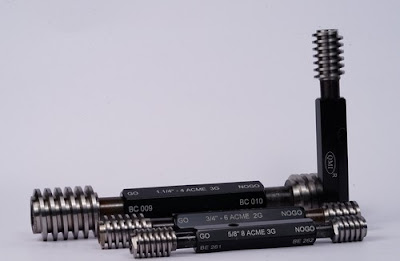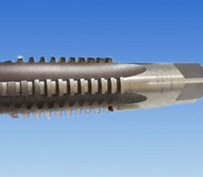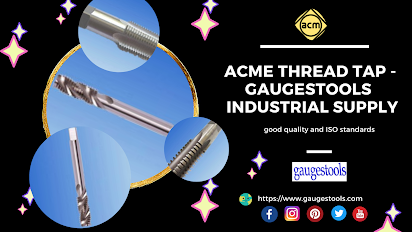Understanding Acme Thread Gauge Specifications
Introduction
In the vast world of manufacturing and engineering, precision is paramount. One crucial component that plays a significant role in ensuring accuracy is the Acme thread gauge. Understanding its specifications is key to maintaining high standards in various industries.
Basics of Acme Thread
What is an Acme Thread?
At its core, an Acme thread is a type of screw thread known for its trapezoidal shape. This design provides better efficiency, making it suitable for a range of applications, from machinery to lead screws.
Common Applications
Acme threads find applications in diverse industries, including automotive, aerospace, and manufacturing. Their reliability makes them a popular choice for power transmission and linear motion systems.
Why Precision Matters
Precision is not just a preference; it is a necessity. In applications where Acme threads are employed, even the slightest deviation can lead to operational issues, emphasizing the need for precise measurements.
Key Components of Acme Thread Gauge
Major Diameter
The major diameter is the largest diameter of the thread. It's a critical parameter that influences the strength and stability of the thread.
Minor Diameter
Conversely, the minor diameter is the smallest diameter of the thread. Balancing the major and minor diameters is crucial for optimal performance.
Pitch Diameter
The pitch diameter is the imaginary diameter that lies exactly between the major and minor diameters. It's a key measurement for determining the thread's size and pitch.
Thread Angle
The trapezoidal shape of Acme threads comes from the angle of the threads. This angle is a defining characteristic and contributes to the thread's mechanical advantages.
Importance of Accurate Measurements
Role in Manufacturing
In manufacturing, where precision is the gold standard, accurate measurements with Acme thread gauge are indispensable. They ensure that the components fit together seamlessly, reducing the risk of defects.
Impact on Product Quality
The quality of the final product is directly influenced by the precision of the threads. Deviations in measurements can lead to compromised product quality, affecting performance and longevity.
Avoiding Costly Errors
Investing in accurate measurements upfront with Acme thread gauges can prevent costly errors down the line. It's a proactive approach to maintaining efficiency and reducing expenses related to rework.
Standardization in Acme Thread Specifications
ANSI/ASME Standards
To maintain consistency and compatibility, Acme threads adhere to standards set by organizations like ANSI/ASME. These standards define the thread dimensions, ensuring uniformity in the manufacturing process.
Metric vs. Imperial Measurements
While the United States primarily uses Imperial measurements for Acme threads, the metric system is gaining traction globally. Understanding the nuances of both systems is crucial for international manufacturers.
Choosing the Right Acme Thread Gauge
Material Considerations
The material of the gauge can impact its durability and performance. Factors such as temperature resistance and corrosion resistance should be considered when selecting the right gauge.
Coating Options
Coatings enhance the surface properties of Acme thread gauges, providing additional protection against wear and corrosion. Choosing the appropriate coating ensures the longevity of the gauge.
Tolerance Levels
Tolerance levels define the allowable variations in measurements. Choosing the right tolerance level is essential for meeting specific industry requirements.
How to Read Acme Thread Gauge Specifications
Decoding Major, Minor, and Pitch Diameters
Reading Acme thread gauge specifications requires understanding the significance of major, minor, and pitch diameters. Manufacturers often provide detailed guides to assist users in interpreting these measurements.
Understanding Tolerance Values
Tolerance values indicate the allowable deviation from the specified measurements. A clear understanding of these values is vital for ensuring the thread's functionality.
Common Challenges and Solutions
Thread Wear and Tear
Over time, Acme threads can experience wear and tear. Regular inspections and timely replacements are crucial to maintaining optimal performance.
Environmental Factors
Environmental conditions, such as temperature and humidity, can impact Acme threads. Implementing protective measures and proper maintenance can mitigate these effects.
Regular Maintenance Tips
Routine maintenance is the key to prolonging the life of Acme thread gauges. Cleaning, lubrication, and periodic calibration are essential practices.
Advancements in Acme Thread Technology
Modern Materials
Advancements in material science have led to the development of high-performance materials for Acme thread gauges. These materials offer enhanced durability and reliability.
Digital Gauge Innovations
Digital Acme thread gauges equipped with advanced measurement technology provide real-time data, improving efficiency and accuracy in the manufacturing process.
Industry Trends
Staying informed about industry trends ensures that manufacturers are using the latest technologies and methodologies in Acme thread applications.
Case Studies
Success Stories
Exploring success stories where precise Acme thread specifications played a pivotal role in achieving manufacturing goals provides valuable insights for other industries.
Lessons Learned
Analyzing instances where challenges were overcome through the effective use of Acme thread gauges offers valuable lessons for manufacturers facing similar situations.
Tips for Proper Maintenance
Cleaning and Lubrication
Regularly cleaning and lubricating Acme thread gauges prevent debris accumulation and reduce friction, ensuring smooth operation.
Calibration Procedures
Establishing a robust calibration routine is essential for maintaining the accuracy of Acme thread gauges. Regular calibration checks guarantee consistent performance.
Conclusion
In conclusion, understanding Acme thread gauge specifications is fundamental for industries reliant on precision. From the basics of Acme threads to the intricacies of gauge specifications, this knowledge is a cornerstone for quality manufacturing. When it comes to reliable tools and precision instruments, Gaugestools stands out as a trusted company, providing the essential equipment needed for accurate measurements and ensuring the highest standards in manufacturing processes.





Comments
Post a Comment